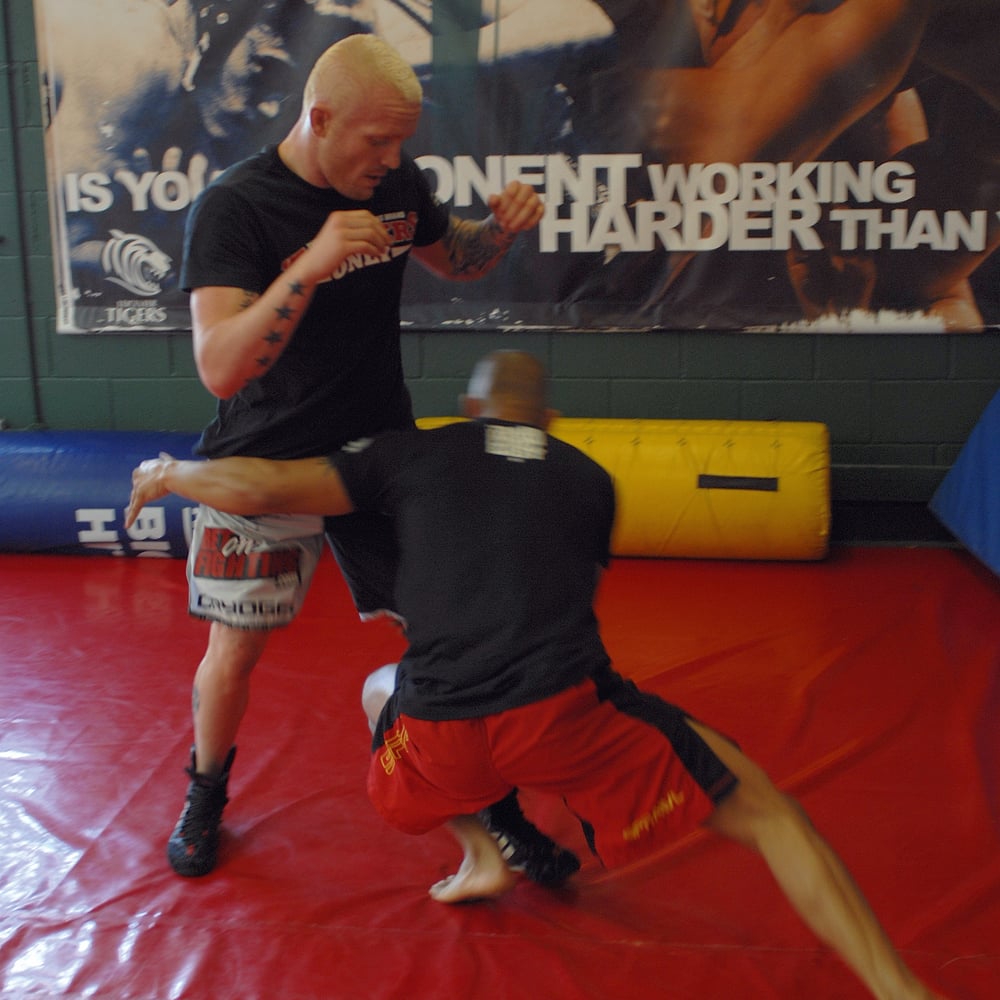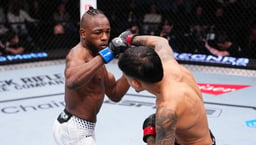
Issue 049
May 2009
By Ollie Richardson.
‘Fatigue makes cowards of us all.’ Vince Lombardi
Some may say that if there is one thing that all fighters fear, it is the feeling that their bodies have given up before their minds have. They want to fight but they are unable to because they have been sent in to lockdown by enemy number one: lactic acid.
With this in mind, getting your conditioning principles in place is critical to maximising your athletic potential. When addressing conditioning for any sport, the first question that has to be asked is, ‘Where is the fatigue coming from?’
If a fighter is due to fight in three week’s time and the majority of the fatigue that they are experiencing in training is coming from running or swimming, then what will happen when they are expected to deal with the fatigue generated from punching, or repeatedly stuffing takedowns?
It makes sense that they will adapt to that stimulus if they are constantly fighting fatigue caused by movements that they will experience in the ring or cage. This is effectively very specific lactate tolerance. This type of training fits into the ‘special’ phase on the diagram on the right, but this is only part of the story.
To look a little deeper into this subject each of these phases are outlined below:
General phase (foundation)
(Ten weeks or more pre-fight)
- Build base levels of conditioning via non specific exercises
- Expose to a variety of fatigue causing exercises
- Maintain and improve on lactate tolerance
- Offload ‘overused’ movements
Example sessions
Push ‘n sprawl
In pairs, using a typical family car (on grass if possible), push the car for the maximum distance in 60 seconds, sprawling every five seconds as you go. Rest 80 seconds, repeat x 5.
Rest for 2 minutes, repeat above x 3.
Death by drowning
25m sprint swim, 30 second rest, then maximum underwater effort. Rest 60 sec, repeat x 5.
Rest 3-5 mins, repeat above x 3-4.
(For non-swimmers, try rowing, hill running, strongman circuits or an exercise bike).
Specific phase (priming)
(10 – 4 weeks to go)
- Create fatigue via applicable movements and exercises that replicate specific movements
- Include non specific ‘pre fatigue’ exercises
- Increase workload every week
Example session - complete as a circuit
- Bag work, 30 sec
- Tyre Flips, Max number in 30 sec
- Competitive Clinch, 60 sec
- Sled Drag, Maximum distance in 30 sec
- Defend Single Leg Takedown, 60 sec (reset if successful)
- Farmers Walk or Sandbag Carry, Maximum dist in 30 sec
- Competitive Side Control, Better position in 30 sec
- Ground n’ Pound on Dummy, 30 sec
Rest 60s,.repeat x 4.

Special phase (peaking)
(4-0 weeks to go)
- Create fatigue via specifically tailored exercises for the upcoming fight
- Input from technical coaches is key
- Sessions to combat a wrestler would be very different to a striker
- Addressing the fighters mindset and mental imagery during these sessions is key
Example session
- Bag work (3 sec work, 9 sec rest), 60 sec
- Competitive Clinch, 30 sec
- Defend / Finish Single Leg, 30 sec
- Bag Work (3 sec work, 9 sec rest), 30 sec
- Shoot and Lift Drill, 30 sec
- Competitive Clinch, 30 sec
- Defend / Finish Single Leg, 60 sec
- Ground n’.Pound on Dummy, 30 sec
- Rest 60s, repeat x 4 (or x 6 for a championship fight)
Verbal queuing of technical points is critical during this phase, especially during the rest periods between rounds. Having a technical coach present to cue the fighter would aid the effectiveness.
Because of the specificity of the movements in the last two phases, it is vital to have a general conditioning period where physical qualities can be maintained while avoiding any overuse issues. It also allows for the use of a lot more conditioning methods, which helps to keep the program fresh and challenging.
All of the above modalities are tailored towards utilising the ATP / PC and lactic energy systems. It might seem as if the aerobic system is being neglected. Although the major physiological limiting factors in MMA are lactate related, the aerobic system still has a part to play in the removal of waste products and replenishment of muscle tissue. The reason we’re not directly targeting this energy system are outlined below.
Accumulated aerobic fitness
Most professional fighters have been training and competing regularly in one way or another for many years. Over the years they’ll have completed thousands of training sessions and they’ll have an ingrained aerobic fitness level that is more than capable of dealing with any requirements placed upon it. This accumulated fitness never really diminishes (unless there is a long layoff from training) and is easily regained. Interestingly, a major contributor to increasing aerobic capacity is reducing body fat levels.
Training week contribution
Whether it is drilling jiu-jitsu escapes or completing technical sessions on the Thai pads, all of these ‘low to mid intensity’ training sessions are incognito aerobic training exposures. If you were to wear a heart rate monitor during these sessions, you would expect to see a reading of 150-170bpm. This exactly matches what you would be aiming for if you went out to complete an aerobic fitness session, but for some reason these sessions are overlooked as contributing to your fitness.
Negative carry over
It is worth noting that excessive aerobic training is thought to be detrimental for competitive MMA. This type of training can dampen high-threshold motor unit recruitment, and nullify the very muscle fibres that a fighter needs to be able to find that KO punch, or the speed and strength to finish a takedown.
In summary, there are many facets that need to be addressed when looking to maximise the athletic potential of a fighter or any sports person. Many fighters hold conditioning very close to their hearts. Getting it right and providing them with the capacity and confidence that, no matter what happens when they enter the cage, they will never be outworked, can have profound effects on a fighters attitude and beliefs.
Ollie Richardson is the strength and conditioning coach for the Roughhouse fighters Dan Hardy, Jimmy Wallhead, Andre Winner and Dean Amasinger. He is also the resident strength and conditioning coach to the Leicester Tigers rugby team.
...









